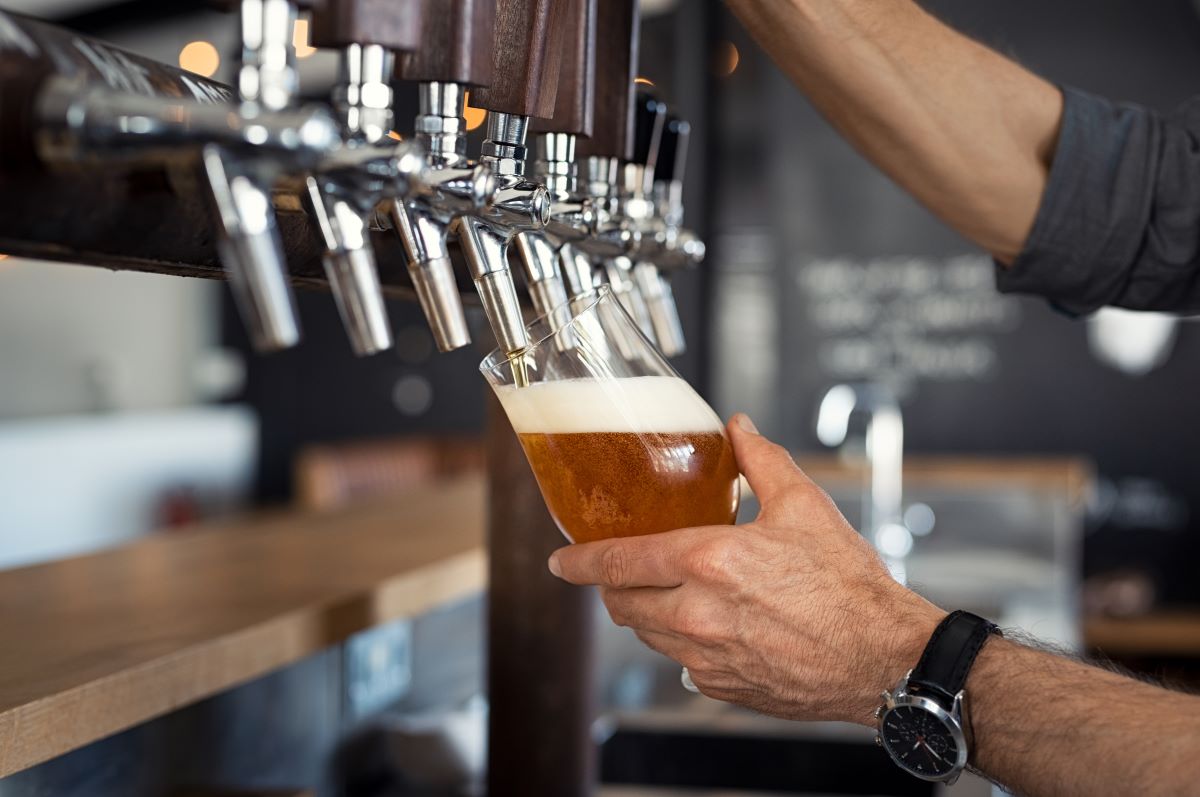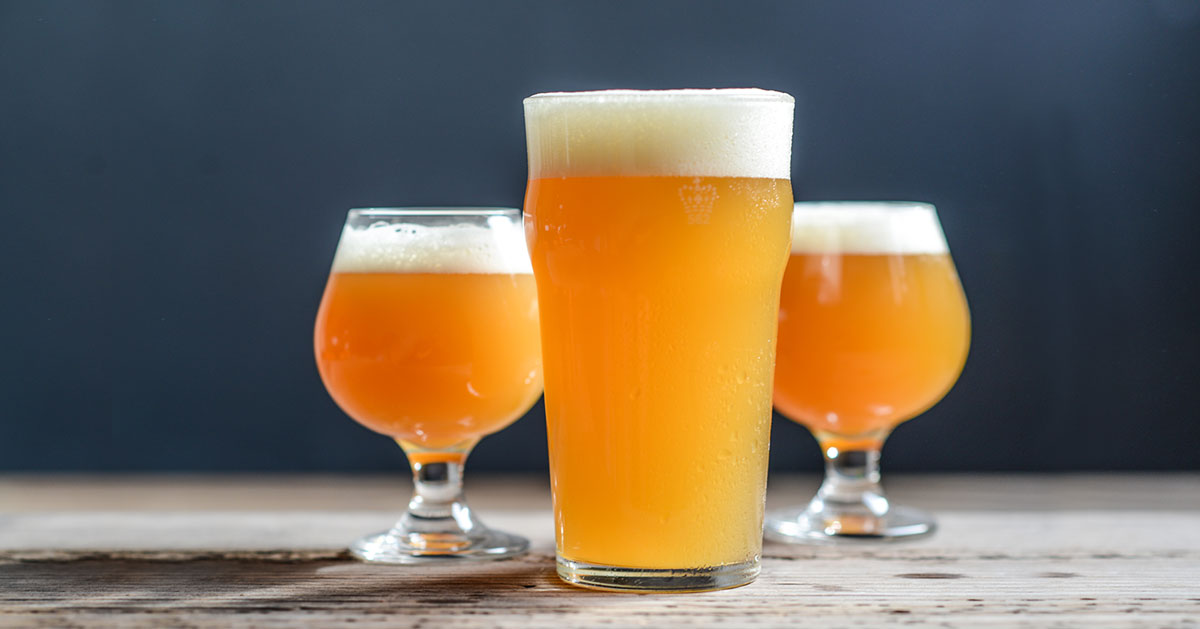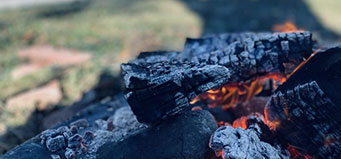What Yeast Is Best For Homemade Beer?
Yeast is what makes beer beer. It turns the sugar from grains into alcohol during fermentation, and the rest is history. In this blog, we’re covering the best types of yeast to use with your next beer-making kit.
What Is the Role of Yeast in Fermentation?
The role of yeast in beer production is to convert grain sugars into alcohol during fermentation. In other words, yeast turns what is essentially a soup of malted grains and hops into the beverage that we know and love as beer.
In most recipes, home brewers add yeast in between the boiling and fermentation steps of the brewing process. For the best results, ensure that your wort is between 75ºF and 80ºF (or a different temperature if specified in your recipe) before adding yeast. Use ice, cold water, or a home brew chiller to get there.
What Kind of Yeast Is Used To Brew Beer?
The type of yeast you should use to brew beer depends on the type of beer you’re brewing. Looking for how to choose yeast for beer? Check your recipe! A helpful home brewing recipe will give you a breakdown of ingredients (including yeast), portions, and detailed instructions. Fortunately, these recipes are included in each and every one of our beer ingredient kits. Yeast is typically sold separately, so here are some general guidelines for which type to get:
- Saccharomyces Cerevisiae: Also known as ale yeast, this strain is most often used when brewing ales such as IPAs, porters, and stouts. Ale yeast is top-fermenting, meaning that it can function at higher temperatures than lager yeast.
- Saccharomyces Pastorianus: Also known as lager yeast, this strain is used when brewing lagers, which also include pilsners. As a bottom-fermenting strain, lager yeast requires lower temperatures during fermentation than ale yeast.
- Brettanomyces: This wild yeast strain, often referred to as brett, is used to brew sour beers like Belgian lambics.
Find the perfect yeast strain for your next brew with Great Fermentations!
Which Beer Contains the Least Amount of Yeast?
Commercial lagers, such as Miller Lite, tend to be very low in yeast at the time of consumption. While all beer recipes require yeast during the fermentation process, low-yeast beers go through intense filtration or cold conditioning processes to minimize the live yeast counts in the final product.
Why do certain beer producers go to such great lengths to reduce residual yeast? For both flavor and accessibility. When there’s yeast left over in the beer, it produces a yeasty flavor. Some beers, like Hefeweizen, lean into this flavor and the hazy appearance it comes with. Mass producers also care about making their beer drinkable for as many people as possible, including those with yeast sensitivities.
What Is the Common Beer Yeast Strain?
The most common types of beers brewed are ales and lagers, so the most common yeast strains are Saccharomyces Cerevisiae (ale yeast) and Saccharomyces Pastorianus (lager yeast). Many brewers also experiment with sour beer, which uses the wild yeast strain Brettanomyces.
Ales tend to be easiest beer recipe for beginners, so if you’re new to home brewing, you’re more likely to use Saccharomyces Cerevisiae.
What Type of Yeast Is Used for Ale Beer?
The type of yeast used for ale beer is Saccharomyces Cerevisiae. There are many options within this strain, however, and the best choice will depend on your specific recipe. For example, the Magic Dragon IPA recipe recommends using one of the following yeast options:
- Omega Yeast OYL004 West Coast Ale 1
- Imperial Organic A07 Flagship
- White Labs WLP001 California Ale
- Wyeast #1056 American Ale
- Danstar BRY-97 West Coast Ale Dry Yeast
What Yeast Strain Makes Beer Sour?
Brettanomyces is the yeast strain that’s used to make sour beers. In addition to using this special strain of wild yeast, sour beers also require an extra step during the brewing process. During this step, you would introduce bacteria in a controlled manner to give your beer a sour flavor. These brews are best saved for experienced brewers, however, as there can be a fine line between a nice sour brew and a spoiled batch.
What Beers Are High in Brewers Yeast?
The beers that are highest in brewer’s yeast are porters, stouts, and IPAs. Beers that are high in alcohol or that have a hazy appearance also tend to use more yeast than other types of beer.
Ready to try your hand at these recipes? Start with one of these fantastic choices:
What Is the Best Yeast for High ABV?
The highest ABV for beer is produced by “turbo yeast,” which can reach 25% ABV in a relatively short period of time. However, turbo yeast won’t be useful for many home brewers, as the sweet spot for many beers is 6-8% ABV. Whether brewing beers with high or low ABV levels, your best bet is to check your recipe to make sure you’re using the right kind of yeast.
Find the Right Yeast for Your Next Brew at Great Fermentations!
It’s time for your next brew. Exciting, right? Before you get started, there are two key things you need:
- A beer-making kit with pre-portioned ingredients and a detailed recipe
- The right yeast to match that recipe
At Great Fermentations, we have both! Explore our options for beer ingredient kits and brewer’s yeast.



